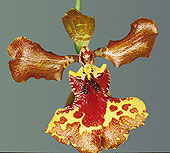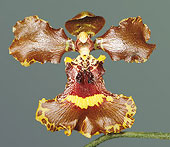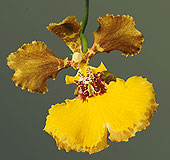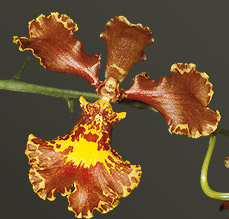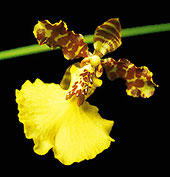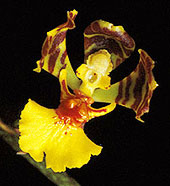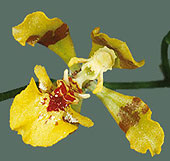 |
When
Lindley described the species O. cornigerum, like the most part of
the botanist of that age, he used to give a common name, this was Oncidium bull's head, due to those two projected small corns.
From the examination of the material of Lindley's herbarium of O. cornigerum as well O. fimbriatum, Carlos Eduardo could see that
the lateral lobes of the lip are projected forward as there were two corns. .
|
The drawing presented in Orchidaceae Brasilienses as Oncidium fimbriatum,
in fact, corresponds to O. cornigerum described by Lindley.
So, it is possible that O. fimbriatum can be a synonym
of O. cornigerum which has been the first one to be described.
O. fimbriatum has been described from just one flower
and possibly when Lindley got it, it should be already old.
Concerning O. cruciatum, he went two times to Vienna herbarium and
in both, the exsiccatae was lend to Spain, since l975. He does not know
if it has returned to the herbarium after the works because they were repairing
the herbarium. He believes that when they conclude the works, they will
try to recuperate because it is a treasure.
|
